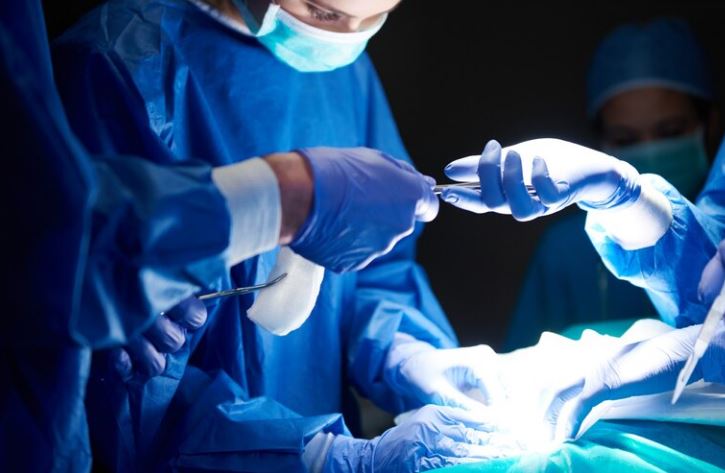Surgery is still one of the most effective medical procedures because it can restore function, reduce pain, and often save lives. However, until recently, there were risks associated with the operating room that were frequently avoidable. Surgical teams now have their own crucial road map: the WHO Surgical Safety Checklist, just as pilots rely on pre-flight checklists to prevent disasters. This 19-point protocol, which was created in partnership with Harvard’s School of Public Health and was first introduced in 2008, has revolutionized surgical care all over the world—not with sophisticated instruments, but with a straightforward and organized dialogue.
The checklist improves clarity, avoids mistakes, and promotes teamwork by breaking down surgery into three critical moments: prior to anesthesia, prior to the initial incision, and prior to exiting the operating room. The tool standardizes things that should never be left to chance, which is especially helpful for lowering human error. The team as a whole confirms each item out loud. During these intentional pauses, a culture of shared responsibility develops, where hierarchy becomes less rigid and accuracy becomes more important.
Key Elements of the WHO Safe Surgery Initiative
| Attribute | Detail |
|---|---|
| Developed By | World Health Organization in collaboration with Harvard School of Public Health |
| Year Released | 2008 |
| Structure | 19-item checklist divided across three phases (Briefing, Time-Out, Debriefing) |
| Demonstrated Impact | Mortality and complications reduced by over 30% |
| Core Objectives | Improve teamwork, communication, and safety in surgical environments |
| Global Reach | Adopted in over 120 countries, both high-income and low-resource settings |
| Implementation Guide | WHO Safety Checklist PDF |
| Technological Support Tools | Pulse oximeters, audit software, robotic adaptation kits |
| Notable Adaptations | C-section, ophthalmology, orthopedic trauma, robotic-assisted surgery |
| Backing Organizations | Over 200, including the American College of Surgeons and the Royal College of Nursing |
The checklist has accelerated significantly over the last 15 years. Its regular application has significantly enhanced patient outcomes in Tanzanian mission clinics and public hospitals in Canada. Its capacity to adjust to various surgical situations while maintaining its essential integrity is what gives it its extraordinary versatility. There are now customized versions of robotic surgery, cesarean sections, and ophthalmological procedures that all reflect the fundamental focus on safety, communication, and controlled pause.
Its reasoning is similar to that of a professional orchestra in many respects—each member is extremely talented, but the magic only occurs when every note is played in unison. Operating rooms have become places of thoughtful cohesion where each clinician is aware of not only their own task but also the bigger picture that is developing around them thanks to the coordination of these verbal checkpoints.

A growing public demand for healthcare transparency also parallels the checklist’s introduction into major health systems. Awareness of medical procedures increased during the pandemic. Proactive patients started learning about the risks of surgery, safety procedures, and even whether their surgical team was following international safety guidelines. Hospitals began releasing quarterly safety compliance data in response to this public shift. As a result of the accountability loop widening, internal audits and outside observers began monitoring the frequency and effectiveness of checklist adherence.
WHO has garnered broad support from over 200 healthcare facilities and public health organizations through strategic initiatives such as the Safe Surgery Saves Lives campaign. These recommendations have not only strengthened the checklist’s legitimacy but also promoted ongoing improvement. For instance, cross-disciplinary briefings and simulation-based learning are now included in training modules, guaranteeing that the team stays in sync even under time constraints.
The Patient Safety Pulse Oximetry Project further enhanced the checklist, which was remarkably effective even in low-resource environments. This complementary program trained staff to identify hypoxemia, a major cause of anesthesia-related deaths, and provided surgical units with reasonably priced pulse oximeters. In life-threatening situations, surgical teams could respond much more quickly if this tool were integrated with the safety checklist.
A futuristic perspective is added by the European Commission-funded SAFROS project. It examined how humans, data systems, and machines can work together under safety-anchored protocols with a focus on robotic surgery. The results of this project, which involved experts from France, Italy, and Sweden, showed that human coordination and verification were still indispensable despite robotic precision. An incredibly robust framework for contemporary surgery was created by combining traditional communication methods with cutting-edge technology.
The focus on pre-operative briefings and team introductions is one remarkably similar trend across continents. These small customs turn unknown faces into familiar teammates. According to studies, mutual accountability is increased when medical professionals identify themselves by name and position prior to a procedure. All of a sudden, it’s more than just a checklist; it’s a trust agreement between those who are responsible for someone’s life.
This change has also been seen in Hollywood. These days, surgical teams are depicted stopping, talking, and even correcting one another in everything from fictional dramas like New Amsterdam to medical documentaries like Netflix’s Lenox Hill. These reflect the changing reality in operating rooms and are not ornaments. Professionals behind those surgical masks are bound together by more than just sterile equipment; they are also bound together by mutual respect, common protocols, and, more and more, a shared checklist.
The checklist acts as a safety net and a source of confidence for young medical professionals. When they first start working in high-pressure settings, new residents, nurses, and anesthetists frequently experience information overload. The checklist becomes a guiding thread by establishing their practice in a dependable and familiar format. It emphasizes critical thinking and reduces cognitive strain. “It’s like having a seasoned mentor whispering reminders just when you need them most,” said a surgical registrar in the UK.
Policymakers in the healthcare industry have also taken notice. According to Health Service Executive (HSE) policy, using the checklist is now required in Ireland. During accreditation audits, hospitals with Joint Commission accreditation in the United States are required to show that they follow structured safety checks. This change started out slowly for some nations, but eventually the obvious advancements became too great to ignore. Within a year of implementation, one Brazilian hospital reported a 40% decrease in post-operative infections.
As we look to the future, it is evident not only how popular the checklist is but also how deeply ingrained it has become in the care culture. It is now a mindset rather than a document to be crossed off a list. The same principles apply whether in a remote field hospital or a high-tech robotic suite: pause, check, communicate, confirm.
